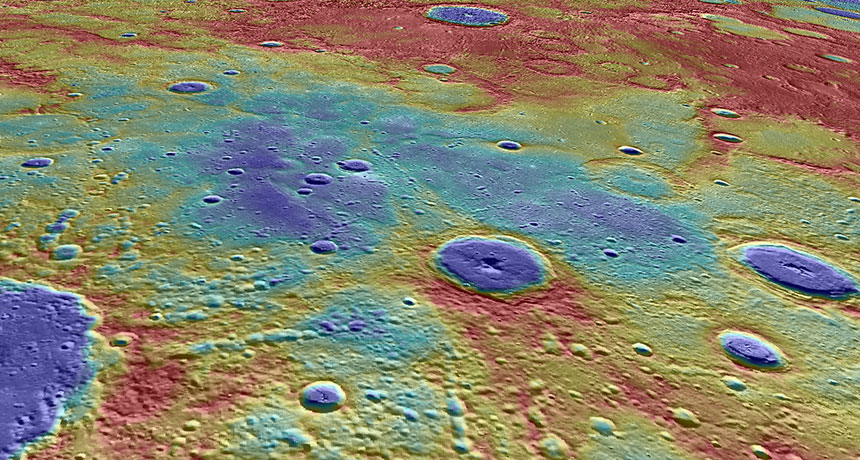Origin date established for Mercury’s magnetic field
Data from MESSENGER yield clues about planet’s early evolution

MERCURY MAGNET Mercury’s relic magnetic field is preserved in rocks scattered across low-lying volcanic plains (blue) nestled between higher elevation terrains (red), as seen in this false color image. The crater in the middle is about 65 kilometers across.
NASA, JHU Applied Physics Laboratory, Carnegie Institution of Washington







